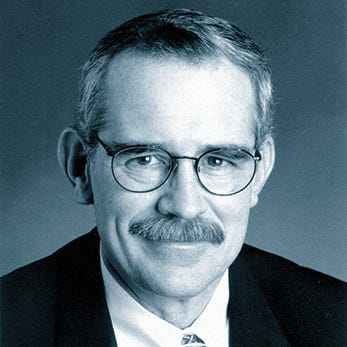ETFs’ Hidden LiquidityETFs’ Hidden Liquidity
It’s not the ETF’s volume that really matters.
April 2, 2018

Upon the recent publication of an article highlighting the performance of rather lightly traded exchange traded fund, a reader commented that, despite the fund’s attractiveness, he remained an unlikely investor. He cited the fund’s low daily turnover as his concern. Fair enough: I’m not in the business of making recommendations. But his comment got me thinking. There are lots of novel ETFs that are shunned out of hand because investors equate daily throughput with liquidity. Volume’s certainly a factor, but ETFs actually exhibit TWO kinds of liquidity—primary and secondary.
Most non-institutional investors effect their ETF transactions in the secondary market: they trade existing ETF shares on the exchange, relying mostly on the liquidity displayed on-screen from their brokers to trade with other investors or market makers.
Not all of an ETF’s liquidity is readily visible through the national best bid or offer, though. There’s substantial liquidity hidden inside an ETF’s order book as well as in the additional quotes emanating from other exchanges and the OTC market. Without seeing the entire picture of trading information, an investor could seriously underestimate an ETF’s true liquidity.
There’s supply to be found in the primary market as well. Remember, the store of ETF shares is open-ended. Shares can be created or redeemed at will to offset changes in demand through the intervention of institutional investors known as Authorized Participants. If one wants to trade an ETF in size—REAL size, denominated in blocks of 50,000 or 100,000 shares—an AP can be enlisted to work the deal.
Viewed from this perspective, it’s actually the liquidity of the ETF’s underlying securities that determines how many ETF shares can be created (bought) or redeemed (sold) without market impact. With a little math, you can determine the number of shares that can be traded in any of the fund’s underlying securities without crossing that threshold (if you’re math averse, Bloomberg will do the computation for you). With these values in hand, you can then determine the structural liquidity of the ETF itself.
An ETF component’s implied daily tradeable share, or IDTS, value can be calculated as:
IDTS equals ((30-day average daily trading value of the stock times 25 percent) divided by stock shares per creation unit) multiplied by creation unit size, where:
25 percent is a variable percentage (Bloomberg’s default setting is 25 percent);
Stock shares per creation unit is set by the ETF issuer, published in its daily creation file; and
Creation unit size is the minimum ETF share block for creations/redemptions, usually 50,000 shares.
An ETF with an average daily trading volume of just 6,000 shares might scare off a novice investor as being illiquid, but if the markets for the underlying portfolio’s stocks are tight and deep, the more savvy investor might determine that a much larger number of ETF shares could be bought or sold before the least liquid component reaches its trading threshold.
The bottom line? Liquidity in one market, primary or secondary, is not necessarily indicative of liquidity in the other.
Most readers of this column, of course, aren’t likely to trade thousands of ETF shares at a crack, so their ETF business is going to flow to the secondary market. As informed investors, they should be looking beyond average daily trading volume for a more complete measure of a fund’s liquidity. Attention should be paid to the fund’s average bid/ask spread and the premiums or discounts to the fund’s net asset value. Unless one is engaged in the short-term trading of ETFs, liquidity impacts tend to be small. Following some simple common-sense order placement rules can ensure that ETFs can be transacted efficiently:
Use limit orders. Limit orders put price above size in the execution of an order.
Avoid the open and the close. Not all stocks begin trading at the same moment. An ETF can’t be definitively priced if trading in a component is held up. Markets, too, often thin out near the close, reducing trading opportunities.
Trade the overlap. If your ETF contains international stocks, it’s best to trade them at times that coincide with the trading hours of their home markets when spreads are tighter.
Brad Zigler is WealthManagement’s Alternative Investments Editor. Previously, he was the head of Marketing, Research and Education for the Pacific Exchange’s (now NYSE Arca) option market and the iShares complex of exchange traded funds.
About the Author
You May Also Like







